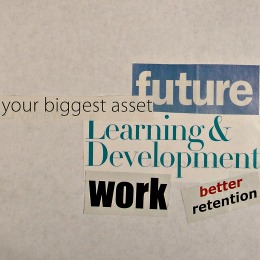Home Page | Blog | Managing | Marketing | Planning | Strategy | Sales | Service | Networking | Voice Marketing Inc.
Small Business Strategy: How to Focus on Your Best Fit Strategy?
Use a Strategic Plan Template
An effective small business strategy will help build your business. Use strategic planning samples or a strategic plan template (for example, a strategic planning SWOT or five forces model analysis) to streamline your strategic process and focus on getting the results you want for your business.
Search This Site

Small business strategy needs to be developed differently than big or medium sized business strategy.
Small business strategies are often focused on developing niche strategies because a smaller enterprise typically has the adaptability and flexibility to narrowly focus (there are many small business strategy articles dedicated to this topic).
However, niche strategies are not always the best choice.
As part of your strategic planning process (for all business sizes), consider Michael Porter's "Five Forces Model" and use the model to help you better understand your business environment.

Once you've reviewed the model and reviewed which small business strategy best-fits your business, develop your strategic plan checklist, to ensure that you cover all the relevant areas, as the next step.
Then conduct your strategic planning SWOT (strengths, weaknesses, opportunities, threats) analysis (some strategists have changed from SWOT to SOAR - strengths, opportunities, aspirations, and results: I have a problem with that because I think it allows businesses to overlook their weaknesses and the threats to their business.
So if you want to use SOAR then also add weaknesses and threats to the mix - doesn't make a nice acronym: SWOTAR). And start writing your strategic business plan.
I often use a strategic planning template or strategic planning samples to build my strategy and plan; I highly recommend that you do so too.
The Five Forces Model is detailed here with a
few examples of each force.
- Entry Barriers
- Cost to enter market;
- Cost advantages for those already in the market;
- Government restrictions and policy;
- Economies of scale; Is the industry dominated by one or two large companies?
- Capital expenditures, including equipment investment costs,
- Brand identity; Is it difficult and/or challenging to attack or weaken existing companies?
- Will customers have to incur high costs to switch from their present supplier to you?
- How will the existing companies in the market react upon your entry?
- Buyer or Customer Power
- Do buyers have leverage in the market?
- Are there many buyers or a few (if just a few, you will be very dependent on them)?
- Are your buyers price sensitive; what kind of pricing strategy do you need to develop and use?
- Is there a threat that your buyers might begin to compete against you (backwards integration)?
- Do your buyers have strong brand identity?
- Is there enough service and/or product differentiation in the industry?
- Are there substitutes available for buyers?
- Are there incentives for buyers?
- Supplier Power
- Are there many suppliers or few (if few, who do those few work with; is there enough supply)?
- Is volume important to supplier - that is, does a buyer have to purchase minimum quantities?
- Can you substitute the materials supplied (for best quality and/or price)?
- Are switching costs high or low?
- Are supply costs contained or volatile?
- Threat of Substitutes
- How easily can your product or service be replaced by another product or service(e.g. DVD players have replaced Video players - technology enabled)?
- Are switching costs high or low?
- Is brand identity a factor?
- Are price and quality a factor?
- Degree of Competition or Rivalry
- Are there high exit barriers (e.g. government penalties)?
- Is the industry concentrated or fragmented?
- Where is the industry in its life-cycle (and what is the product life-cycle stage): is the industry in introductory, growth, maturity or declining phase?
- Are rivals similar or diverse?
- Are switching costs high or low?
- Do competitors have good, high value brand identity or are they considered commodity suppliers? (Conduct competitive intelligence and analyze your competition in business.)
Once you have a better understanding of the environment you operate in (or want to operate in), you will be better able to select the best small business strategy for your business.
The Best Strategic Planning Templates
Include These Strategies:
Many small business industries can be defined as fragmented. Some specific strategies that small businesses need to consider because they are a good strategic fit:
Focus on product or service type - become an expert, high value provider of this service or product; offer strong product differentiation and ensure that your product positioning fits the market.
Focus on a type of customer - become an expert, high value resource to a specific customer group; offer difficult to duplicate knowledge and service. Provide not only good customer service, but the best customer service. And be recognized as the best.
Focus on a specific local area or region - become an expert in that specific area; offer knowledge and resources that no one from outside the area can.
More Small Business Strategies:
(Some Strategic Planning Samples)
- As a small business owner, it is challenging to follow a low-cost/low-price strategy: achieving low costs necessary to offer low prices, you typically would need to enjoy economies of scale that aren't easily obtained as a small business.
However you could consider networking and building alliances with other small businesses that operate in non-competing products or areas, and try to build some buying power and approach suppliers as one entity.
- If you are primarily doing business on the internet, it is possible to be a relatively low-cost business using digital technology but it would likely still need some investment from the business to gain market share in such a gigantic and over-populated market.
- If your small business has multiple locations, it is possible to organize and plan for some economies of scale by setting up each of the individual locations in a template format and running the administration of those locations from one front office.
- If your small business is entering the emerging technologies field, there are some specific strategies to focus on:
- try to be recognized as the first in the field;
- try to be recognized as the best in the field - with a commitment to product quality and differentiation;
- try to build partnerships with the best suppliers in the field;
- then use these three advantages (recognized as first and best and working with the best) to build your relationships with customers.
Always keep your strategic planning process focused on your strategic goals, objectives and action plans. Your small business strategy must be clear, direct and still responsive to changes in the market or in the industry.
More-For-Small-Business Newsletter:
For more timely and regular monthly information on managing your
small business,
please subscribe here.
Read more the relationship of analyses to strategy in your business:
Return to Strategy.
Or return from Small Business Strategy to More For Small Business Home Page.
Review the criteria required to build a Value Chain Analysis for your business.
Subscribe to
More Business Resources E-zine
The Importance of Strategy
Why is strategizing important to your business?
Because it enables you to more clearly understand what you need to do to more your operation in the direction you need, and want, to go.
Doing a thorough analysis and review will enable you to implement more effective strategies, tactics and techniques.
Results and Strategy

Definition of Business Model: It's Different
The type of tactical planning you complete as you strategize is important because it forces you to make difficult choices and difficult decisions.
(Make sure you understand the definition business model - the practices, and focus, of the business on delivering the value proposition - to engage in a strong and successful strategic planning process).
Also write down your choices and decisions to plan the actions necessary to move forward (use samples to provide you with a model for your own action plan).
The action plan is your road map. You must ensure that you are managing the direction you take.
Once you begin this planning process you will need to ensure that the plan you develop is do-able; make sure you include effectiveness measures in your plan.
And remember that your plan for strategy in business needs to be reviewed on a regular basis and be adapted as market and economic conditions change.
The end goal is not the plan but rather the results therefore make sure you have measurements in place to track results.
This Site
Tools for Strategy Planning
Start with your SWOT (strengths, weaknesses, opportunities and threats) analysis.
Add aspirations and results to the SWOT (some do SOAR (strengths, opportunities, aspirations, and results) as a separate activity) to ensure that your vision for your business is incorporated in your goals and objectives.
Conduct a market opportunity analysis and look for unmet needs that align with your objectives.
Doing a thorough analysis and review will enable you to implement more effective strategies, tactics and techniques.







